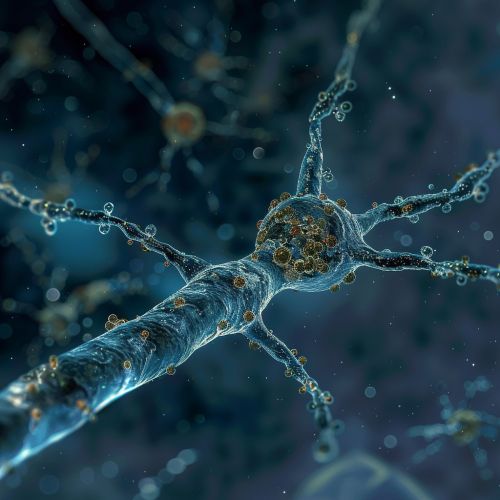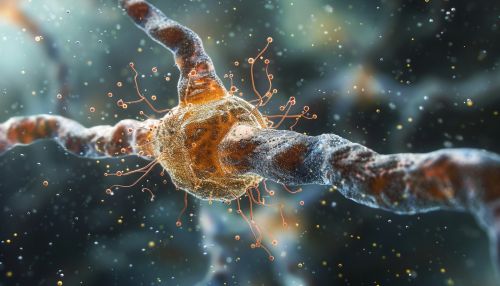Neurotransmitter Receptors
Overview
Neurotransmitter receptors are specialized protein structures located on the surface of neurons and other cells. They are the primary sites of interaction between neurotransmitters, the chemical messengers of the nervous system, and the cells they affect. The binding of a neurotransmitter to its receptor triggers a series of events within the cell, leading to a response that can either excite or inhibit the cell's activity.


Classification
Neurotransmitter receptors can be classified based on several criteria, including the type of neurotransmitter they bind, their molecular structure, and the type of response they elicit in the cell.
By Neurotransmitter Type
Each neurotransmitter has specific receptors that it binds to. For example, acetylcholine binds to nicotinic and muscarinic receptors, while glutamate binds to NMDA, AMPA, and kainate receptors.
By Molecular Structure
Neurotransmitter receptors can also be classified based on their molecular structure. There are two main types: ionotropic receptors and metabotropic receptors.
Ionotropic receptors are ligand-gated ion channels. When a neurotransmitter binds to an ionotropic receptor, it causes the channel to open, allowing ions to flow across the cell membrane. This can lead to a rapid change in the cell's electrical potential, resulting in an excitatory or inhibitory response.
Metabotropic receptors, on the other hand, are G protein-coupled receptors. When a neurotransmitter binds to a metabotropic receptor, it triggers a series of events involving G proteins and second messengers, which can lead to a variety of responses in the cell, including changes in gene expression.
By Response Type
Neurotransmitter receptors can also be classified based on the type of response they elicit in the cell. Excitatory receptors, when activated, increase the likelihood that the neuron will fire an action potential, while inhibitory receptors decrease this likelihood.
Function
The primary function of neurotransmitter receptors is to translate the chemical signal of a neurotransmitter into an electrical or biochemical response in the cell. This is a critical step in the process of neurotransmission, which allows neurons to communicate with each other and with other cells.
When a neurotransmitter is released from a neuron, it diffuses across the synaptic cleft and binds to receptors on the post-synaptic cell. This binding can trigger a variety of responses, depending on the type of receptor and the cell in which it is located.
Role in Disease
Abnormalities in neurotransmitter receptors can lead to a variety of neurological and psychiatric disorders. For example, mutations in the genes encoding certain neurotransmitter receptors have been linked to conditions such as schizophrenia, depression, and Parkinson's disease. In addition, drugs that target neurotransmitter receptors are commonly used in the treatment of these and other disorders.
Research and Future Directions
Research on neurotransmitter receptors continues to be a highly active area of neuroscience. Current areas of focus include the development of new drugs that target specific receptors, the study of receptor function in health and disease, and the exploration of the role of receptors in complex behaviors and cognitive processes.
